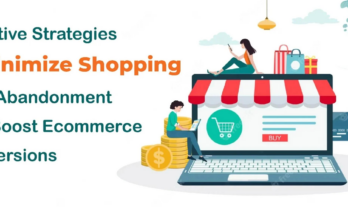In today’s digital world, smartphones have become an essential part of our lives. People now shop, browse, and make purchases directly from their mobile devices. This shift has given rise to mobile commerce, also known as m-commerce. Businesses need to adapt to this trend to stay competitive and grow. In this blog, we will explore the growth of m-commerce, current trends, and strategies businesses can use to stay ahead.
What is Mobile Commerce?
Mobile commerce, or m-commerce, is the process of buying and selling products or services through mobile devices like smartphones and tablets. It includes shopping apps, mobile websites, digital wallets, and in-app purchases.
Why is Mobile Commerce Growing?
- Convenience – Customers can shop anytime, anywhere, without visiting physical stores.
- Mobile Payments – The rise of mobile payment options like Apple Pay, Google Pay, and PayPal makes transactions faster and more secure.
- Better Internet Access – High-speed internet and affordable data plans enable seamless browsing and purchasing.
- Personalized Experience – Mobile apps offer tailored recommendations and personalized shopping experiences.
Key Trends in Mobile Commerce
- Mobile Shopping Apps – Many businesses are creating dedicated apps to improve user experience.
- Voice Search – Customers are using voice assistants like Alexa and Siri to search and shop online.
- Augmented Reality (AR) – AR technology allows customers to visualize products before buying, especially in industries like furniture and fashion.
- One-Click Payments – Simplified checkout processes are increasing conversions.
- Social Commerce – Social media platforms like Instagram and TikTok are turning into shopping hubs with direct purchase options.
Strategies to Stay Ahead in M-Commerce
1. Optimize for Mobile
Make sure your website is mobile-friendly. Use responsive design so that your site works well on all devices. Speed is also important—faster-loading pages lead to better user experiences.
2. Invest in a Mobile App
Consider creating a mobile app for your business. Apps allow you to offer a smoother shopping experience and send push notifications for promotions and updates.
3. Leverage Social Media
Promote your products directly through social media platforms. Use features like shoppable posts, ads, and influencer collaborations.
4. Use Mobile Payment Options
Offer multiple payment options, including mobile wallets and buy-now-pay-later services, to make checkout easier for customers.
5. Focus on Personalization
Analyze user behavior and offer personalized recommendations. Use data-driven insights to show products that match customer preferences.
6. Offer Augmented Reality (AR) Experiences
Allow customers to virtually try products before they buy. AR can boost customer confidence and increase sales.
7. Improve Security
Customers are concerned about data safety. Ensure your website and payment methods are secure and trustworthy to gain customer trust.
8. Provide Excellent Customer Support
Offer live chat, chatbots, and quick responses to customer queries. Reliable customer support improves satisfaction and builds loyalty.
Conclusion
Mobile commerce is here to stay, and its growth is unstoppable. Businesses that adapt to m-commerce trends and embrace mobile-first strategies will remain competitive. By optimizing mobile experiences, leveraging social commerce, and investing in personalization, businesses can attract more customers and increase sales.
At eDreamz, we turn your ideas into reality with expert solutions tailored to your needs. Our goal is to deliver top-notch services without stretching your budget. If you haven’t started focusing on mobile commerce yet now is the time. Stay ahead of the competition and take your business to the next level with m-commerce. Contact us at sales@edreamztech.com, and let’s get started.



